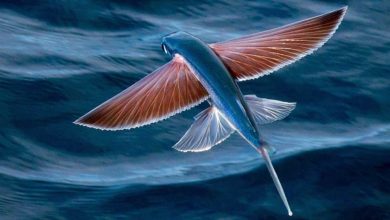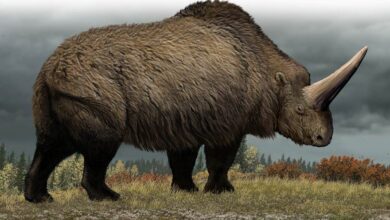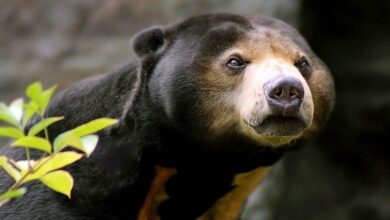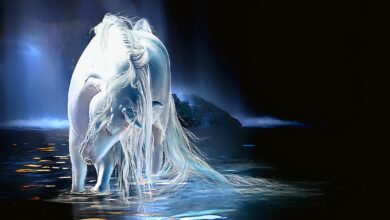Rhinoceroses
Characteristics of rhinos
Rhinoceros are big and most often lonely living herbivores existing in Africa and South-East Asia. Their food is grass, plant shoots, sometimes branches of thorns. Rhinoceroses form a family with five species still alive today. They are characterized by a strong body and short limbs with three toes as well as a large head, which in all representatives living today has a distinctive formation, consisting of one or two horns, which give the family its name. The family represents one of the most diverse and successful in the history of mammals.
Rhinos are large mammals. The representatives living today have a head-trunk length between 2.5 and 3.8 m (plus a 40 to 60 cm long tail) with shoulder heights varying from 1.2 to 1.8 m and a bodyweight varying between 500 and 3,600 kg. The largest rhinoceros species living today is the white rhinoceros ( Ceratotherium simum ). However, fossil species were found to be significantly larger. Some representatives of Elasmotherium and Brachypotherium each reached a bodyweight of more than 5,000 kg.
Classification
- Kingdom: Animalia
- Class: Mammalia
- Infraclass: Eutheria
- Order: Perissodactyla
- Family: Rhinocerotidae
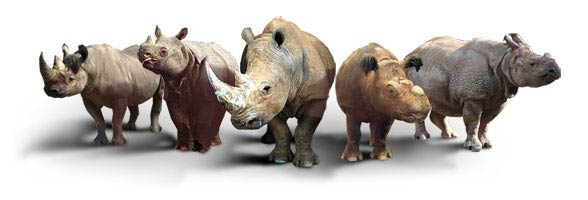
There are 5 species among living rhinoceros:
- White rhinoceros (Ceratotherium simum) the biggest out of living rhinoceros, lives in Africa
- Black rhinoceros (Diceros bicornis). Similarly to the white rhino, it lives in Africa
- Indian rhinoceros (Rhinoceros unicornis). It lives in Asia (India and Nepal)
- Javan rhinoceros (Rhinoceros sondaicus) – one of the most endangered rhinos and one of the most endangered large mammals in the world. This rhino does not exist in zoos.
- Sumatran rhinoceros (Dicerorhinus sumatrensis) – endangered species. It lives only in Sumatra and Borneo. It lives next to the orangutans.
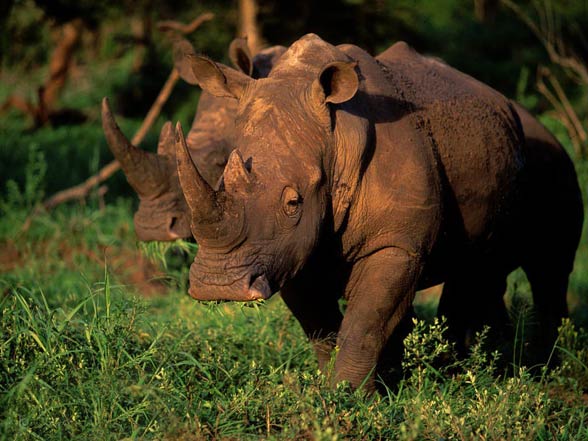
Habitat
Rhinoceros likes staying in dense brushes, on woody savannah. When it is hot, rhino hides in thickets or lies in the shade. It always stays close to rivers or swamps because it loves wallowing in mud. Such baths help it avoid overheating its huge body and protect skin against insects.
Characteristics
Rhinoceroses are active only in the morning and in the evening. They are extremely agile in comparison to their size; they can immediately change the direction they move into.
Rhino has very poor sight, but it has very good hearing and the perfect smell. These senses help these big mammals recognize the danger and contact each other. Its body is covered with extremely thick skin which is in the form of the carapace in some species.
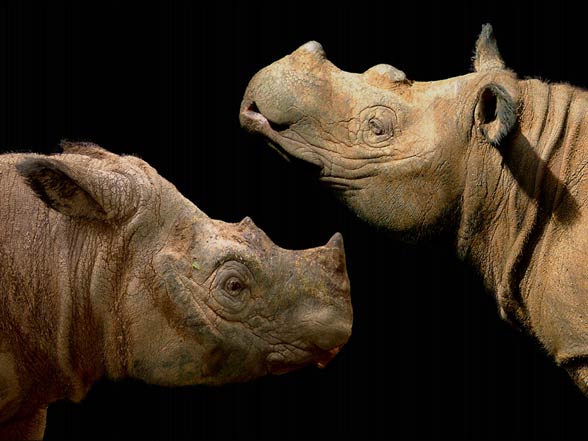
The rhino’s horn
Horns are certainly the most characteristic feature of rhinoceros. They have got two, the front one is bigger. Because of horns, rhinoceros are hunted for; therefore, all five species are almost extinct. In Arabian countries, valuable hilts of daggers are made, and also in eastern medicine, they are used to produce various medicines.
Despite introducing the protection for these animals and the prohibition to trade the horn, rhinos are still dying. It is thanks to the high prices of the horn and continuous demand for it. Therefore, rhinoceros have survived only in natural reserves and national parks.

Detailed information / size:
White rhinoceros (Ceratotherium simum)
- The biggest living rhinoceros and the second-largest land animal
- Height at shoulders: males: 1.7-1.86 m (5.6 – 6.1 ft); females: 1.6-1.77 m (5.3-5.8 ft)
- Body length: males: 3.7-4 m (12.1 to 13.1 ft); females: 3.4-3.65 m (11.2 – 12 ft)
- Weight:
- males: 2,000 – 2,500 kg, average 2,300 kg (5,100 lb), the biggest rhino weighed 3,600 kg (7,900 lb)
- females: 1500 – 2000 kg, average 1700 kg (3,700 lb)
- The length of the tail: 70 cm (28 in)
- The white rhinoceros has got two horns. The bigger horn is up to 150 cm (59 in) long (average 60 cm (24 in).
- Lifetime: up to 50 years old
- Speed: up to 50km/h (31 mph)
- The white rhinoceros are less aggressive than the black rhino
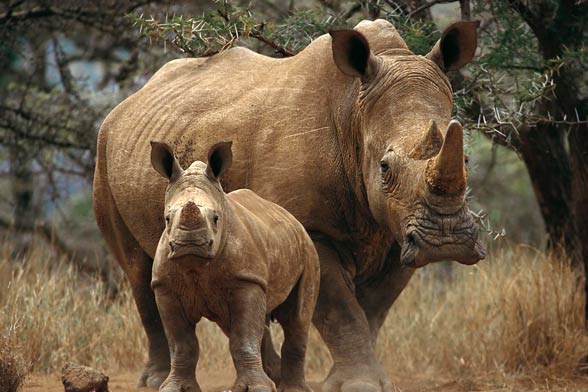
Black rhinoceros (Diceros bicornis)
- Body length: 2.8-3.8 m (9.2-12.5 ft), females are smaller than males
- Height at shoulders: 132-180 cm (52-71 in)
- The length of the tail: around 60 cm (23.6 in)
- The length of the front horn: usually about 50 cm (20 in), max. 150 cm (4ft 11in)
- Weight: 800 – 1,400 kg (1,760 to 3,090 lb), the record – holder weighed 2,200 – 2,900 kg (4,850-6,390lb)
- Lifetime: 35-50 years old in wild
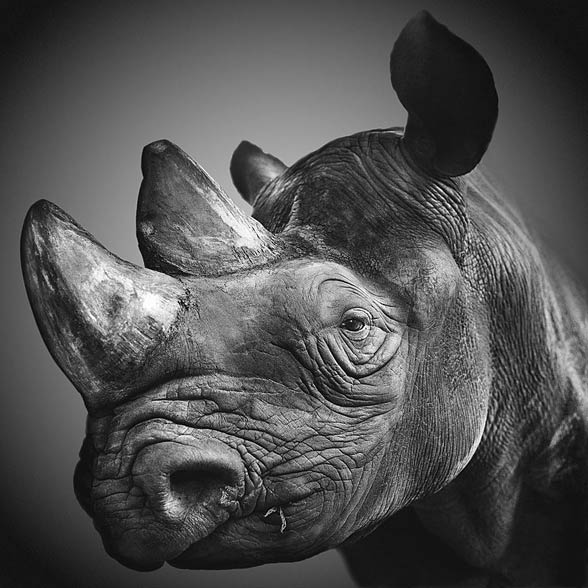
Indian rhinoceros / Horned rhinoceros (Rhinoceros unicornis)
- Body length:
- males: 3.68–3.8 m (12-12.5 ft)
- females: 3.1- 3.4 m (10.2-11.2 ft)
- Height at shoulders:
- males: 1,7–1,86 m (5.6–6.1 ft)
- females: 1.47- 1.73 m (4.82-5.67 ft)
- The length of the skull: over 60 cm (23.6 in)
- The horn: 25 cm (9.8 in), record: 57.2 cm 22.5 in)
- Weight:
- males: about 2200 kg (4,900 lb)
- females: 1600 kg (3,500 lb)
- The biggest rhino reached 4 t (8,800 lb)
- Lifespan: up to 40 years in captivity (the record-holder was 47 years old)
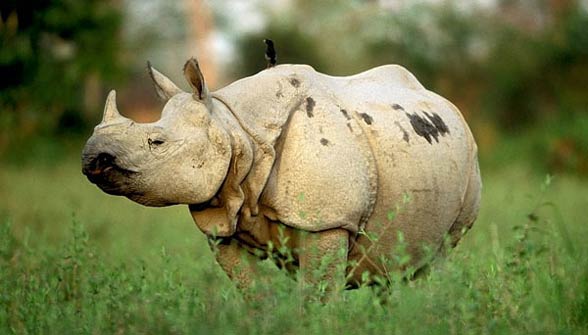
Javan rhinoceros (Rhinoceros sondaicus)
- Body length: 2-4 m (6.6-13 ft), average: 3.1–3.2 m (10ft 2in–10ft 6in)
- Height at shoulders: 1.4-1.7 m (4ft 7in-5ft 7in)
- Weight: 900-2300 kg (1,980-5,070 lb)
- Horn: to 20 cm (8 in), max. 27 cm (11 in)
- Lifetime: 30-45 years (maybe 40-50 years) in wild. In the zoo, it lived up to 20 years
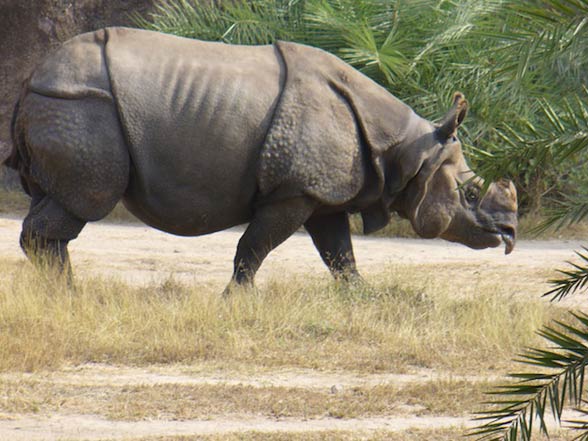
Sumatran rhinoceros (Dicerorhinus sumatrensis)
- Body length: 2.36–3.2 m (7ft 9in–10ft 6in), average about 2.5 cm (8ft 2in)
- Height at shoulders: 1.2-1.45 m (3ft 11in-4ft 9in)
- Weight:
- 500 to 1,000 kg (1,100 to 2,200 lb)
- average: 500-800 kg (1,100-1,760 lb)
- the biggest rhino in captivity weighed 2 tons (4,400 lb)
- The length of the bigger horn: 15-25 cm (5.9-9.8 in)
- The length of the smaller horn: below 10 cm (3.9 in)
- The length of the tail: 35-70 cm (14-28 in)
- Lifespan: 30-45 years in the wild, in the zoo, it lived up to 32 years
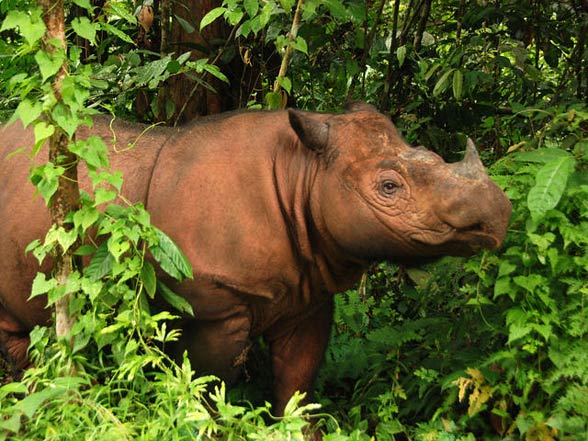
Rhinoceros – interesting facts
- The black rhinoceros during the attack can reach a speed of 50 km/h.
- During mud baths, turtles climb rhinoceros. These reptiles eat parasites from the skin of rhinos.
- Rhinoceros cover longer distances only during the rain period. During the dry season, they do not go more than 25 km away from the waterholes.
- One of the species (the black rhinoceros) exists in alpine forests up to 2700 m (8860 ft). Despite its size, it climbs hills skillfully.
- The white rhinoceros is the biggest representative of rhinoceros. Its bigger horn can be up to 1.5 m (59 in) long.
- The rhinoceros is the relative to the biggest mammal which has ever existed on Earth – it is Indricotherium (Baluchitherium, Paraceratherium)
The Indian rhinoceros on a video
Below, we present a short film showing the walk of the Indian rhinoceros.




